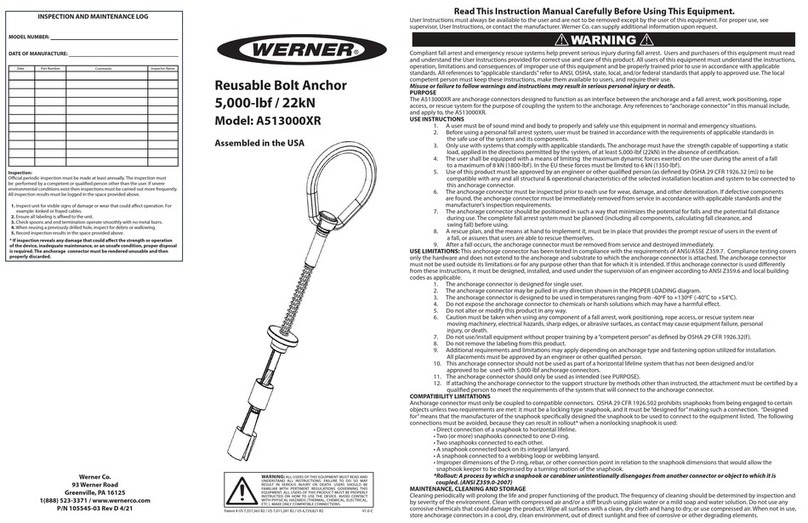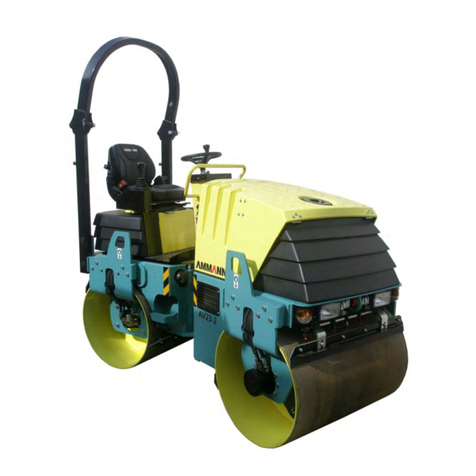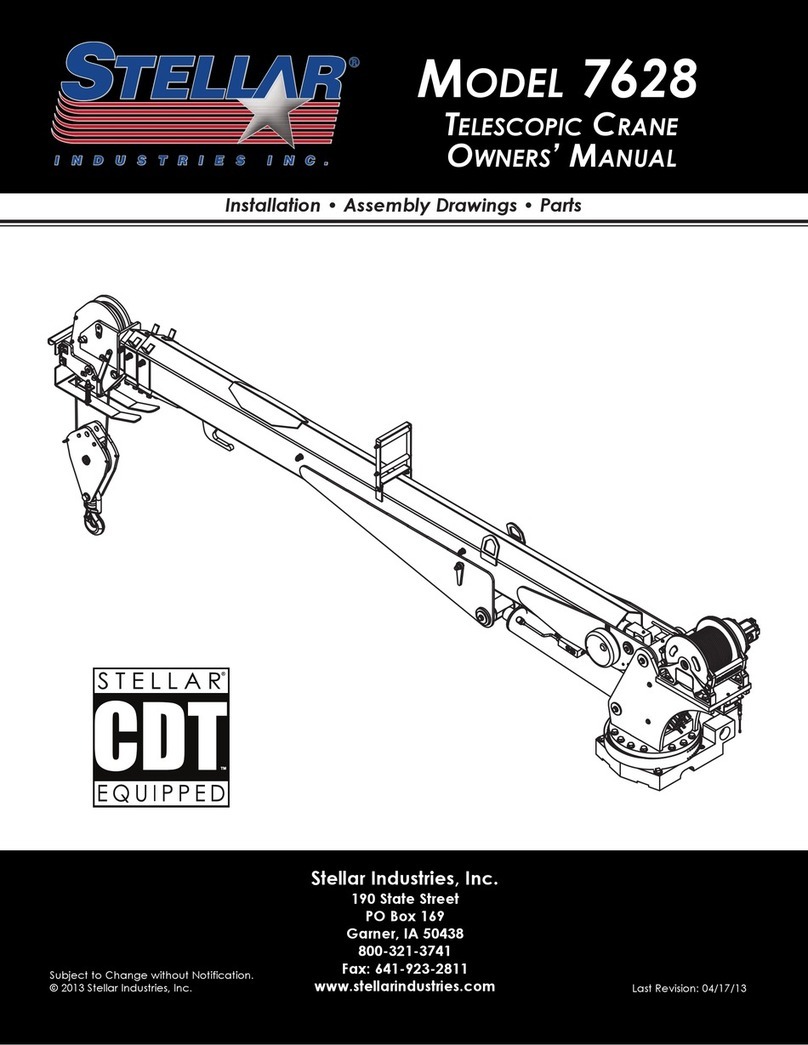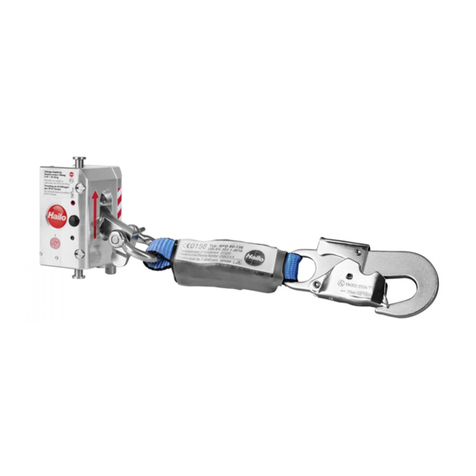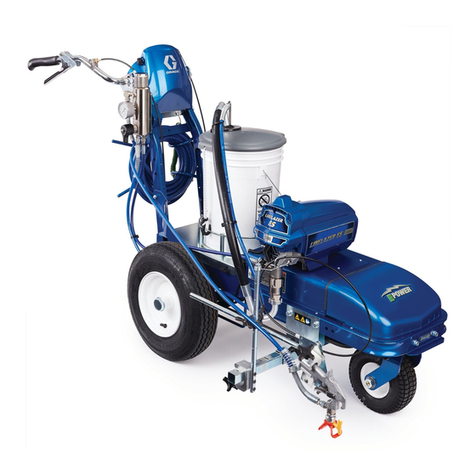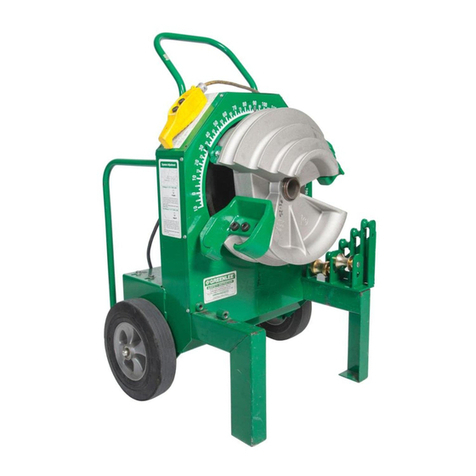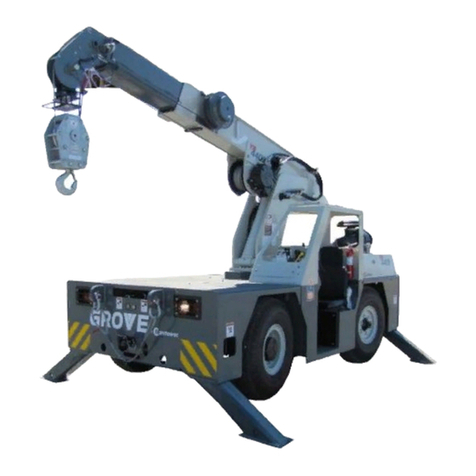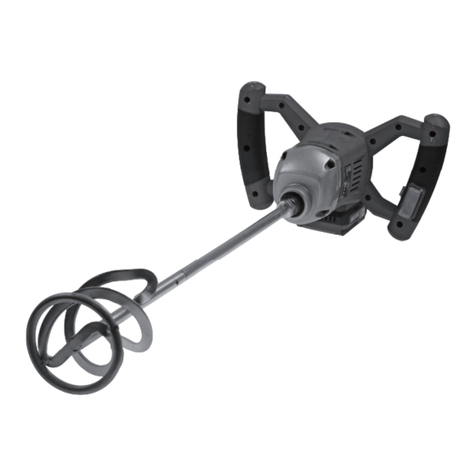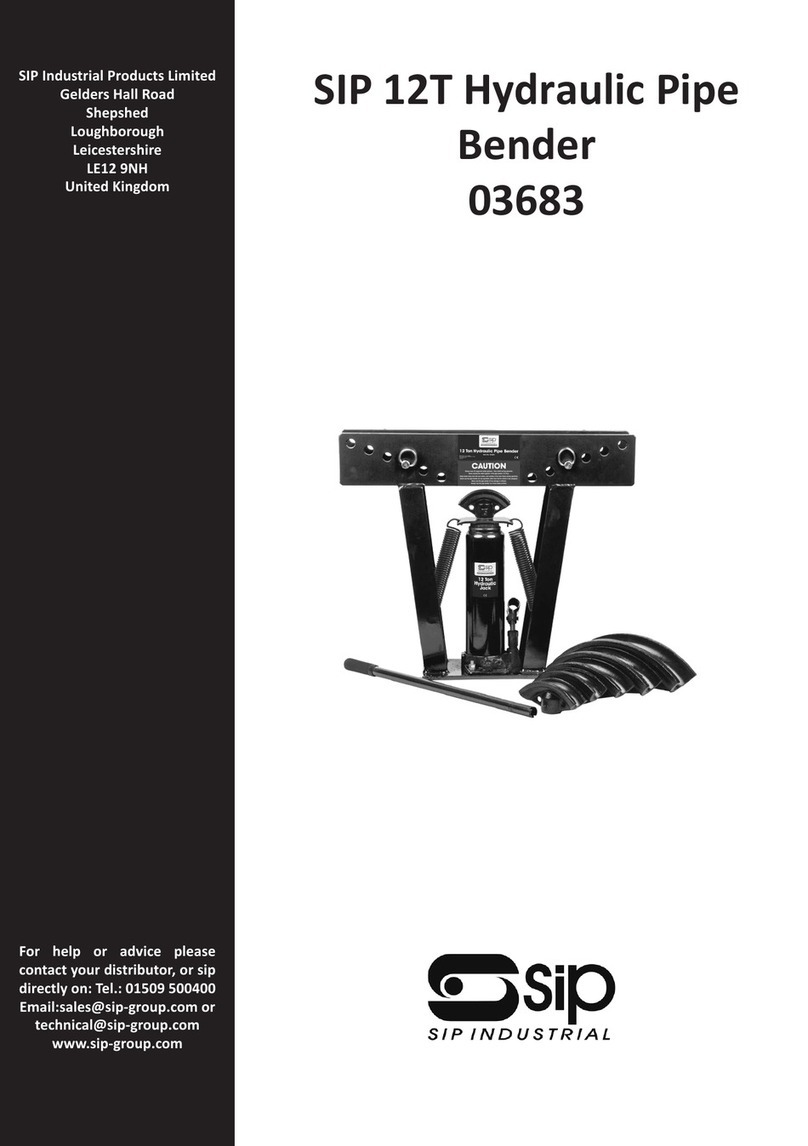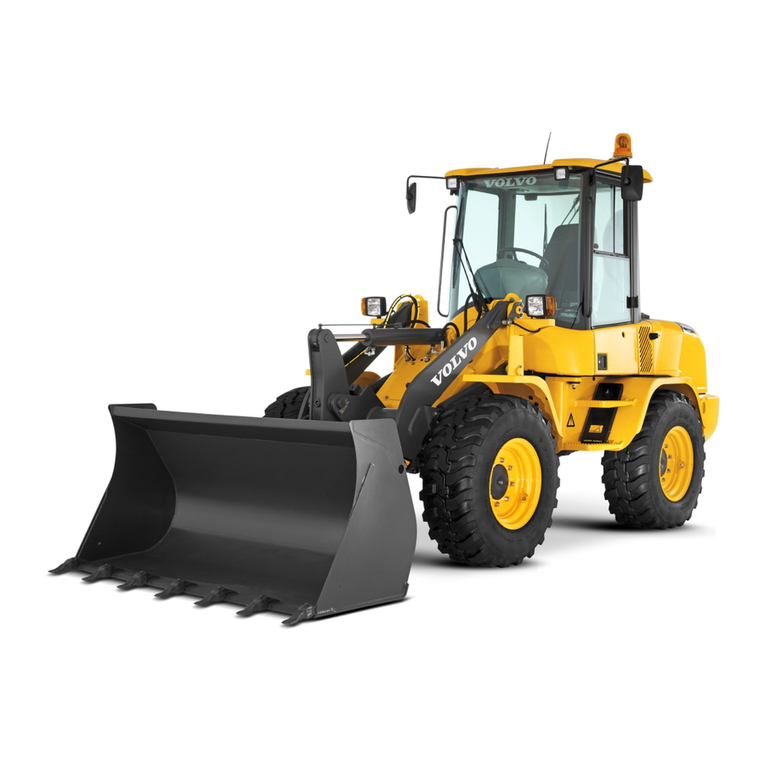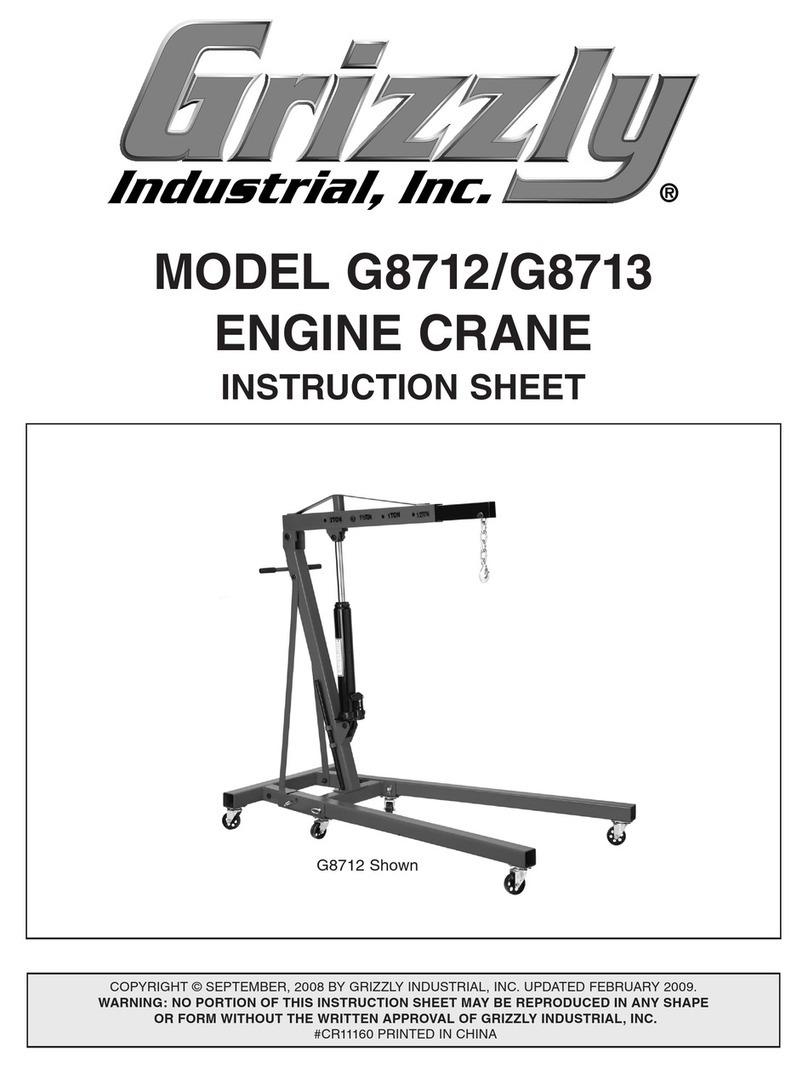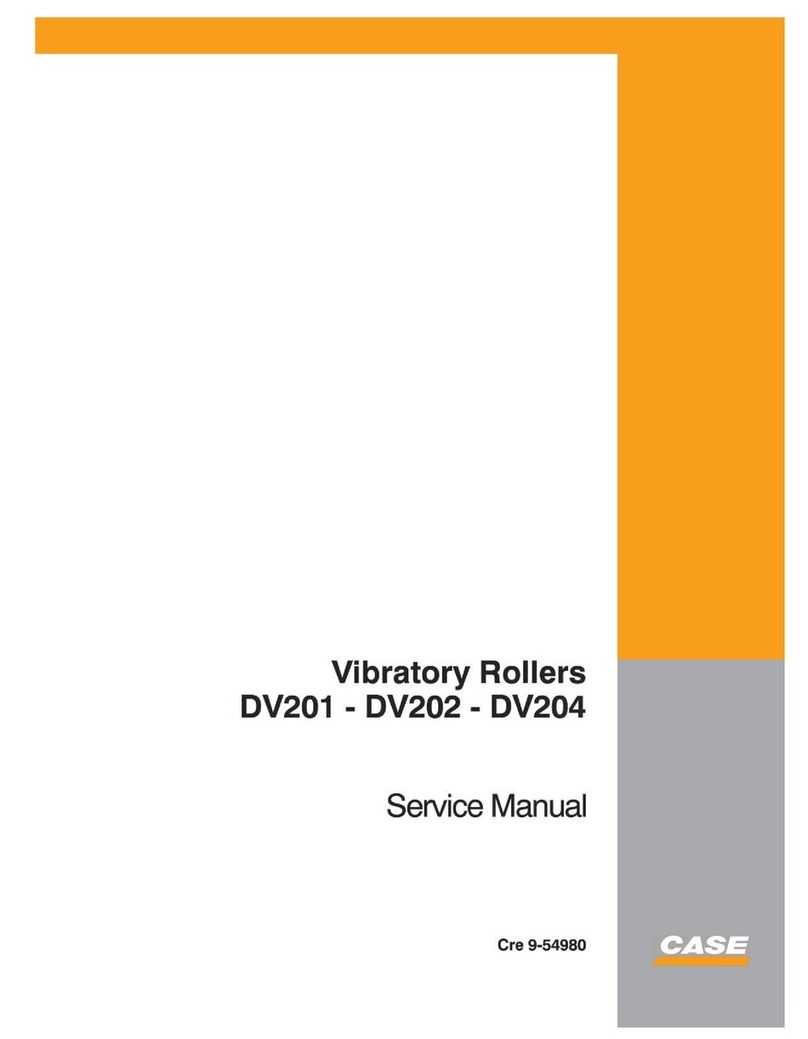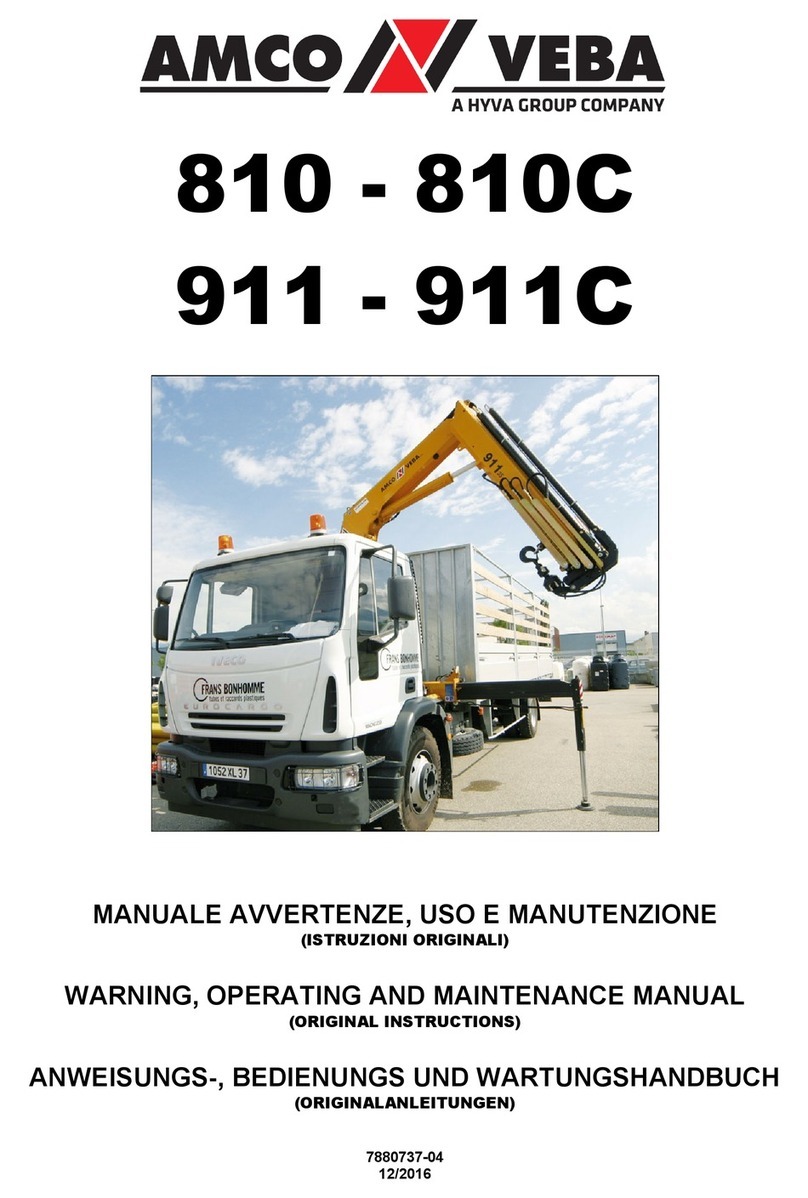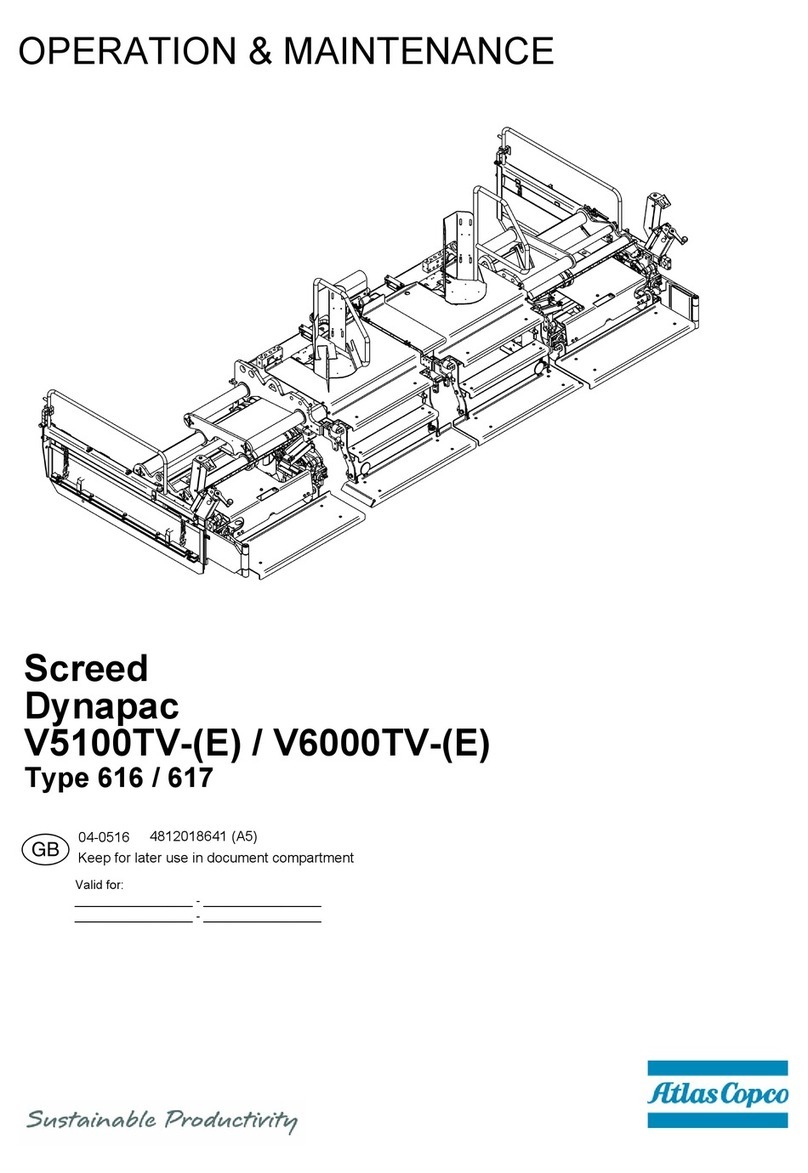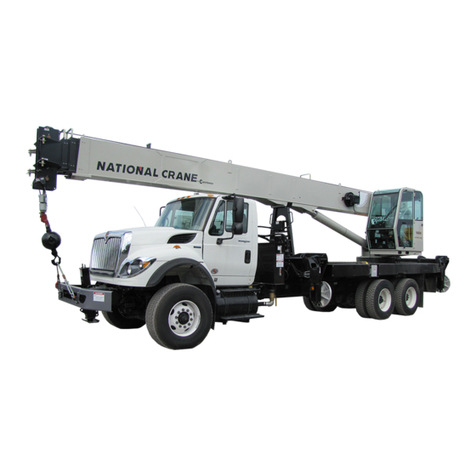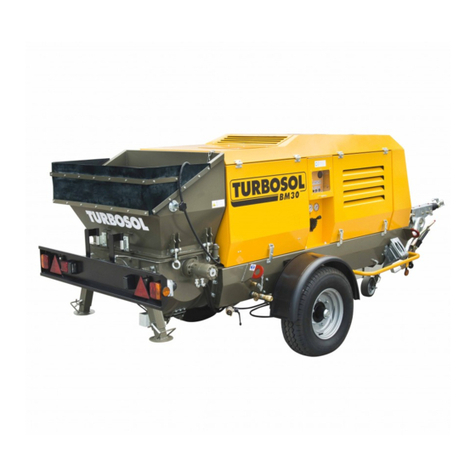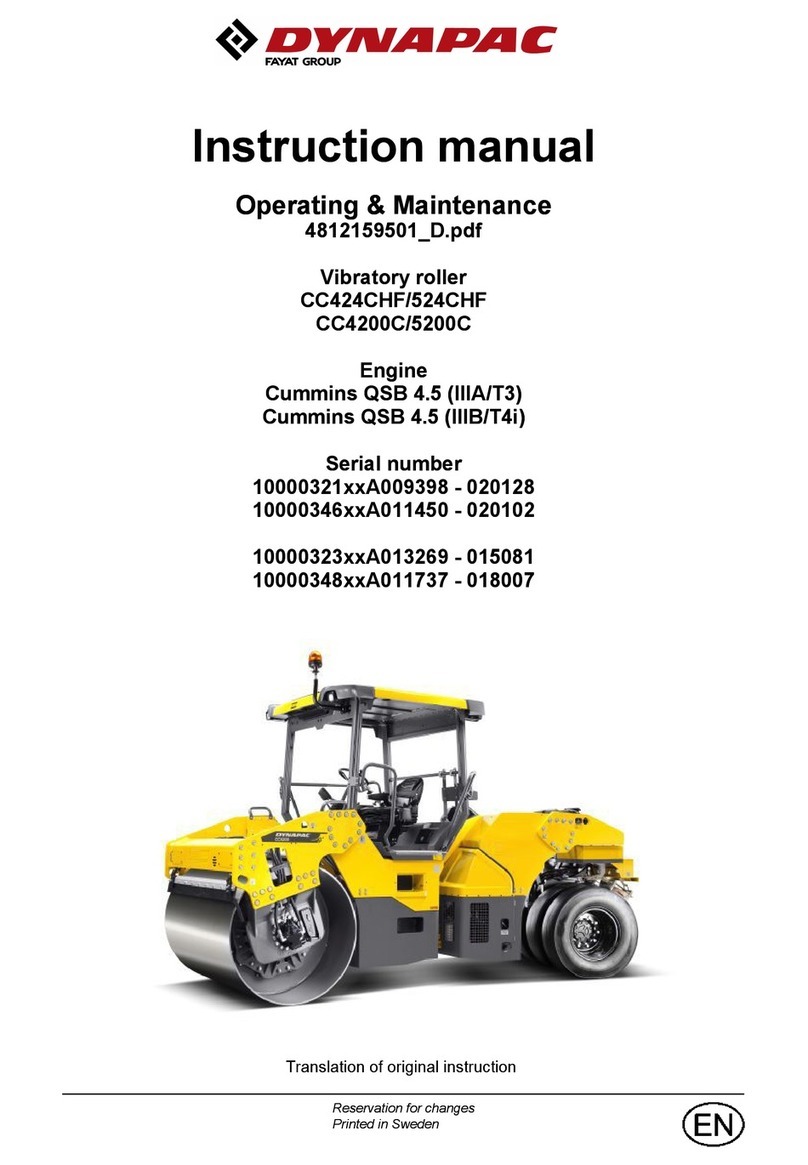Werner MAX PATROL R410020LE User manual

SELF RETRACTING LIFELINES WITH
LEADING EDGE CAPABILITY
Complies with the ANSI Z359.14 standard and
OSHA 29 CFR 1910 and 1926 regulations.
USER INSTRUCTIONS
Werner Co. Fall Protection 724-588-2000
93 Werner Rd. 888-523-3371 toll free
Greenville, PA 16125 888-456-8458 fax
WARNING!
Compliant fall protection equipment must only be used as it was designed. Users MUST read
and follow all user instructions provided with the product. Before using a fall arrest system,
users must be trained in the safe use of the system, as required by OSHA 29 CFR 1910.30 and
1926.503, or local safety regulations. Misuse or failure to heed these warnings and
instructions may result in injury or even death.
WORK SAFE! WORK SMART!
IF YOU HAVE ANY QUESTIONS ABOUT THE PROPER USE OF THE EQUIPMENT, SEE YOUR
SUPERVISOR, USER INSTRUCTIONS, OR CONTACT WERNER CO. FOR MORE INFORMATION.
This manual applies to SRL model numbers R410020LE, R410030LE and R410065LE.

2
GENERAL SAFETY INFORMATION
These User Instructions are not to be removed except by the user of this equipment. Current User
Instructions must always be available to the user.
USE INSTRUCTIONS AND LIMITATIONS
IMPORTANT
Before use, the user must read and understand these User Instructions. Keep these User Instructions
for reference.
PURPOSE
Self-Retracting Lifelines with Leading Edge capabilities are designed to be used as part of a complete
personal fall arrest system.
USE INSTRUCTIONS
1. Failure to follow all instructions and limitations on the use of SRL-LE may result in serious
personal injury or death.
2. Before using a personal fall arrest system, employees must be trained in accordance with the
requirements of OSHA 29 CFR 1910.30 and 1926.503 in the safe use of the system and its
components.
WARNING!
1. Failure to follow all instructions and limitations on the use of Self-Retracting Lifelines
with Leading Edge capability (SRL-LE) may result in serious personal injury or death.
2. Minors, pregnant women and anyone with a history of either back or neck problems
should not use this equipment.
3. Do not use or install equipment without proper training from a“competent person” as
dened by OSHA 29 CFR 1926.32(f).
4. SRL-LE’s are designed for a single user.
5. Not all fall protection and rescue components are rated for the same user weight
capacity. Only use components rated for the same weight capacity.
6. Caution must be taken when using SRL-LE near moving machinery, electrical hazards,
sharp edges, or abrasive surfaces. Contact with these elements may cause equipment
failure, personal injury, or death.
7. Do not expose SRL-LE to chemicals or harsh solutions which may have a harmful effect.
8. Personal fall arrest systems, including SRL-LE, must be inspected prior to each use
for wear, damage and other deterioration. Defective components must be immediately
removed from service in accordance with the requirements of OSHA 29 CFR 1910.140
and 1926.502.
9. The SRL-LE is designed to be used in temperatures ranging from -40°F to +130°F (-40°C
to +54°C).
10. Do not use if inspection reveals any defect, wear, damage, deterioration, inadequate
maintenance, or unsafe condition. Do not use any equipment that has been subjected to
the forces of arresting a fall or if any part of the load indicator warning is showing.
11. Do not anchor the SRL-LE below the edge at which a fall might occur.
12. The allowable angle of redirection of the lifeline portion of the SRL-LE at the edge over
which a fall might occur (measured between the two sides formed by the redirected
lifeline) shall be at least 90 degrees.
13. Do not work on the far side of an opening, opposite the SRL-LE anchor point.
14. Only Werner Co., or persons or entities authorized in writing by Werner Co., shall make
repairs or alterations to the equipment.
15. Alterations or misuse may result in serious personal injury or death.
CAUTION!
If an SRL-LE is used in conjunction with a cross-arm strap anchorage connector, other
anchorage extension, horizontal lifeline, or extended D-ring, the additional length of
the anchorage connector, extended D-ring, or sag from the lifeline must be taken into
consideration during the clearance calculation process.

3
3. Personal fall arrest and rescue systems, including the SRL-LE, must be inspected prior to each
use for wear, damage, and other deterioration. Defective components must be immediately
removed from service in accordance with the requirements of OSHA 29 CFR 1910.140 and
1926.502.
4. The complete fall arrest system must be planned (including all components, calculating fall
clearance, and swing fall) before using.
5. Users must have a rescue plan, and the means at hand to implement it, that provides for
the prompt rescue of the user in the event of a fall, or assures that the user is able to rescue
themselves. A fall over an edge may require special rescue measures.
6. Store the SRL-LE in a cool, dry, clean environment, out of direct sunlight, when not in use.
7. After a fall occurs on the system, immediately remove from service until a “competent person”
can make the determination for reuse or disposal.
USE LIMITATIONS
1. CAPACITY: SRL-LE’s used in leading edge applications are designed for users with a capacity
(including clothing, tools, etc.) up to 310 lb (141 kg) total working weight. The SRL-LE used in
overhead applications has a capacity (including clothing, tools, etc.) up to 400 lb (181 kg) total
working weight.
2. MATERIALS: The lifeline of the SRL-LE is 7x19 3⁄16 inch galvanized steel wire rope.
3. CORROSION: Do not leave SRL-LE’s in environments where corrosion of metal parts could
take place as a result of vapors from organic materials. Use near seawater or other corrosive
environments may require more frequent inspections to ensure corrosion damage is not affecting
the performance of the product.
4. CHEMICAL HAZARDS: Solutions containing acids, alkali, or other caustic chemicals, especially
at elevated temperatures, may cause damage to the SRL-LE’s. When working with such
chemicals, frequent inspection of this equipment must be performed. Contact Werner Co. with
any questions concerning the use of the SRL-LE around chemical hazards.
5. EXTREME TEMPERATURE: SRL-LE’s are designed to be used in temperatures ranging from
-40°F to +130°F (-40°C to +54°C). Protection should be provided for SRL-LE’s when used near
welding, metal cutting or similar activities. Contact Werner Co. with any questions concerning
high temperature environments.
6. ELECTRICAL HAZARDS: Use extreme caution when working near high voltage power lines due
to the possibility of electric current owing through the SRL-LE or connecting components.
7. HEALTH: Minors, pregnant women and anyone with a history of either back or neck problems
should not use this equipment.
8. RESCUE: In the event of a fall over the edge, special rescue measures may be required.
9. TRAINING: Do not use SRL-LE’s without proper training from a “competent person” as dened by
OSHA 29 CFR 1910.140(b) and 1926.32(f).
10. REPAIRS: Only Werner Co., or persons or entities authorized in writing by Werner Co., may
make repairs or alterations to the equipment.
ANCHORAGE REQUIREMENTS
ANCHORAGES
All anchorages to which the SRL-LE attaches must meet the requirements of ANSI Z359.2 and OSHA
29 CFR 1910 and 1926.
OSHA states:
Anchorages used for attachment of personal fall arrest equipment shall be independent of any
anchorage being used to support or suspend platforms and capable of supporting at least
5,000 pounds (22.2 kN) per employee attached, or shall be designed, installed, and used as part
of a complete personal fall arrest system which maintains a safety factor of at least two; and
under the supervision of a qualied person.
WARNING!
Not all fall protection and rescue components are rated for the same user weight capacity.
Only use components rated for the same weight capacity.

4
COMPATIBLE CONNECTIONS
INCOMPATIBLE CONNECTIONS
ANSI Z359.2 states that anchorages selected for fall arrest systems must have a strength capable of
sustaining static loads, applied in all permitted directions by the system:
A) no less than 5,000 pounds (22.2 kN) for non-certied anchorages; or
B) at least two times the maximum arresting force for certied anchorages;
C) according to ANSI Z359.6, Specifications and Design Requirements for Active Fall
Protection Systems.
When more than one personal fall arrest system is attached to the anchorage, the strength in (A) or
(B) must be multiplied by the number of personal fall arrest systems attached to the anchorage.
CONNECTION REQUIREMENTS
COMPATIBILITY LIMITATIONS
All connecting subsystems must only be coupled to compatible connectors. OSHA 29 CFR 1910.140
and 1926.502 prohibit snap hooks from being engaged to certain objects unless two requirements are
met: snap hook must be a locking type and must be “designed for” making such a connection. Under
OSHA “designed for” means that the manufacturer of the snap hook specically designed the snap
hook to be used to connect to the equipment in question.
The following connections must be avoided because they can result in rollout* when a non-locking
snap hook is used:
• Direct connection of a snap hook to horizontal lifeline.
• Two (or more) snap hooks connected to one D-ring.
• Two snap hooks connected to each other.
• A snap hook connected back on its integral lanyard.
• A snap hook connected to a webbing loop or webbing lanyard.
• Improper dimensions of the D-ring, rebar, or other connection point in relation to the snap
hook dimensions that would allow the snap hook keeper to be depressed by a turning motion
of the snap hook.
*Rollout: A process by which a snap hook or carabiner unintentionally disengages from another
connector or object to which it is coupled.
NO! NO! NO! NO!
NO!NO!NO!NO!

5
CLEARANCE REQUIREMENTS
CLEARANCE REQUIREMENT WITH OFFSET AND SETBACK DISTANCE
FOR LEADING EDGE APPLICATIONS FOR R410020LE AND R410030LE
SETBACK
DISTANCE
OFFSET
DISTANCE
2 Foot
(0.6m)
4 Foot
(1.2m)
6 Foot
(1.8m)
8 Foot
(2.4m)
10 FOOT
(3.0m)
12 Foot
(3.7m)
14 Foot
(4.3m)
16 Foot
(4.9m)
18 Foot
(5.5m)
20 Foot+
(6.1m)+
0 Foot (0m) 17.0 ft
(5.2m)
17.0 ft
(5.2m)
17.0 ft
(5.2m)
17.0 ft
(5.2m)
17.0 ft
(5.2m)
17.0 ft
(5.2m)
17.0 ft
(5.2m)
17.0 ft
(5.2m)
17.0 ft
(5.2m)
17.0 ft
(5.2m)
2 Foot (0.6m) 17.8 ft
(5.4m)
17.5 ft
(5.3m)
17.3 ft
(5.3m)
17.2 ft
(5.2m)
17.2 ft
(5.2m)
17.2 ft
(5.2m)
17.1 ft
(5.2m)
17.1 ft
(5.2m)
17.1 ft
(5.2m)
17.1 ft
(5.2m)
4 Foot (1.2m) 19.5 ft
(5.9m)
18.7 ft
(5.7m)
18.2 ft
(5.5m)
17.9 ft
(5.5m)
17.8 ft
(5.4m)
17.6 ft
(5.4m)
17.6 ft
(5.4m)
17.5 ft
(5.3m)
17.4 ft
(5.3m)
17.4 ft
(5.3m)
6 Foot (1.8m) 20.2 ft
(6.2m)
19.5 ft
(5.9m)
19.0 ft
(5.8m)
18.7 ft
(5.7m)
18.4 ft
(5.6m)
18.2 ft
(5.5m)
18.1 ft
(5.5m)
18.0 ft
(5.5m)
17.9 ft
(5.5m)
8 Foot (2.4m) 21.0 ft
(6.4m)
20.3 ft
(6.2m)
19.8 ft
(6.0m)
19.4 ft
(5.9m)
19.1 ft
(5.8m)
18.9 ft
(5.8m)
18.7 ft
(5.7m)
18.5 ft
(5.6m)
10 Foot (3.0m) 20.6 ft
(6.3m)
20.2 ft
(6.2m)
19.9 ft
(6.1m)
19.9 ft
(6.0m)
19.4 ft
(5.9m)
DO NOT
USE
EXAMPLE: With the SRL-LE anchor set back 10 feet from the edge, the user can work up to 8 feet
(2.4m) offset along the leading edge. The required clearance is 19.8 feet (6.0 m) from the working
level to the nearest obstruction below.
The required clearance includes; Free Fall and Swing Fall Distance, Harness Stretch, Deceleration
Distance and Safety Factor.
CLEARANCE REQUIREMENT WITH OFFSET AND SETBACK DISTANCE
FOR LEADING EDGE APPLICATIONS FOR R410065LE
SETBACK
DISTANCE
OFFSET
DISTANCE
2 Foot
(0.6m)
4 Foot
(1.2m)
6 Foot
(1.8m)
8 Foot
(2.4m)
10 FOOT
(3.0m)
12 Foot
(3.7m)
14 Foot
(4.3m)
16 Foot
(4.9m)
18 Foot
(5.5m)
20 Foot+
(6.1m)+
0 Foot (0m) 17.5 ft
(5.4m)
17.5 ft
(5.4m)
17.5 ft
(5.4m)
17.5 ft
(5.4m)
17.5 ft
(5.4m)
17.5 ft
(5.4m)
17.5 ft
(5.4m)
17.5 ft
(5.4m)
17.5 ft
(5.4m)
17.5 ft
(5.4m)
2 Foot (0.6m) 18.3 ft
(5.6m)
18.0 ft
(5.5m)
17.8 ft
(5.5m)
17.7 ft
(5.4m)
17.7 ft
(5.4m)
17.7 ft
(5.4m)
17.6 ft
(5.4m)
17.6 ft
(5.4m)
17.6 ft
(5.4m)
17.6 ft
(5.4m)
4 Foot (1.2m) 20.0 ft
(6.1m)
19.2 ft
(5.9m)
18.7 ft
(5.7m)
18.4 ft
(5.6m)
18.3 ft
(5.6m)
18.1 ft
(5.5m)
18.1 ft
(5.5m)
18.0 ft
(5.5m)
17.9 ft
(5.5m)
17.9 ft
(5.5m)
6 Foot (1.8m) 20.7 ft
(6.3m)
20.0 ft
(6.1m)
19.5 ft
(5.9m)
19.2 ft
(5.9m)
18.9 ft
(5.8m)
18.7 ft
(5.7m)
18.6 ft
(5.7m)
18.5 ft
(5.6m)
18.4 ft
(5.6m)
8 Foot (2.4m) 21.5 ft
(6.6m)
20.8 ft
(6.3m)
20.3 ft
(6.2m)
19.9 ft
(6.1m)
19.6 ft
(6.0m)
19.4 ft
(5.9m)
19.2 ft
(5.9m)
19.0 ft
(5.8m)
10 Foot (3.0m) 21.1 ft
(6.4m)
20.7 ft
(6.3m)
20.4 ft
(6.2m)
20.1 ft
(6.1m)
19.9 ft
(6.1m)
DO NOT
USE
EXAMPLE: With the SRL-LE anchor set back 10 feet from the edge, the user can work up to 8 feet
(2.4m) offset along the leading edge. The required clearance is 20.3 feet (6.2 m) from the working
level to the nearest obstruction below.
The required clearance includes; Free Fall and Swing Fall Distance, Harness Stretch, Deceleration
Distance and Safety Factor.
This manual suits for next models
2
Table of contents
Other Werner Construction Equipment manuals

